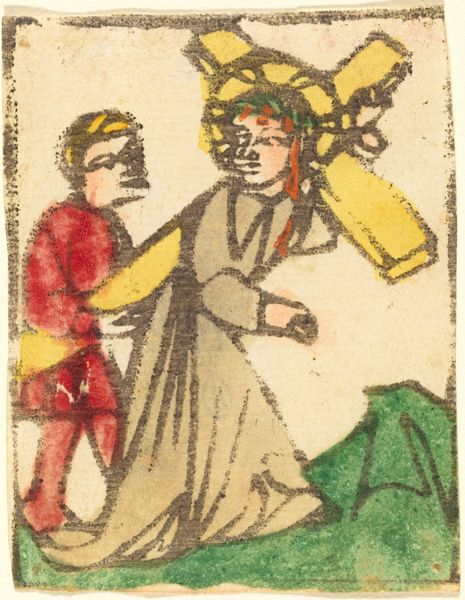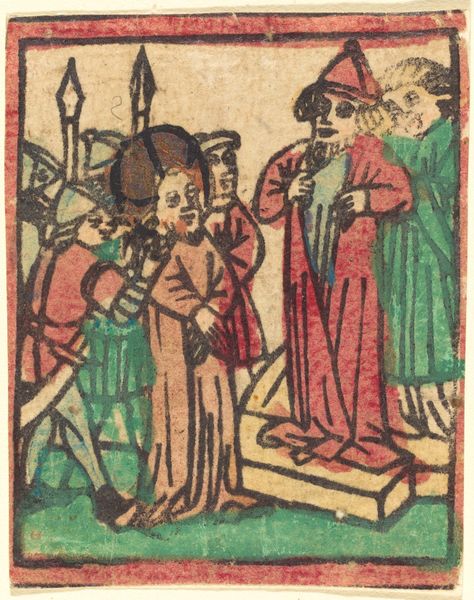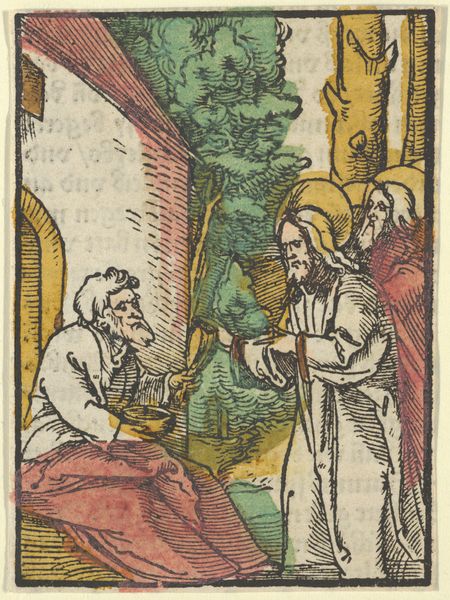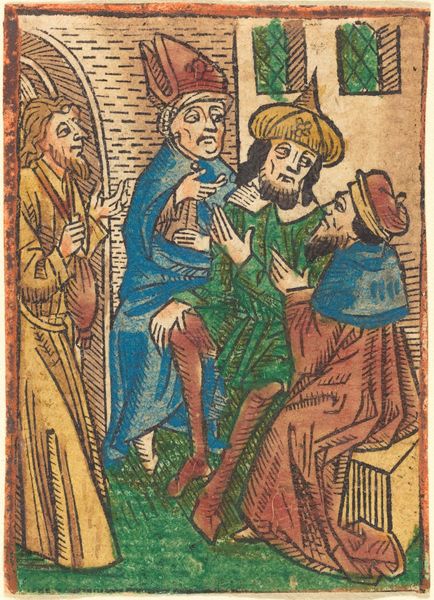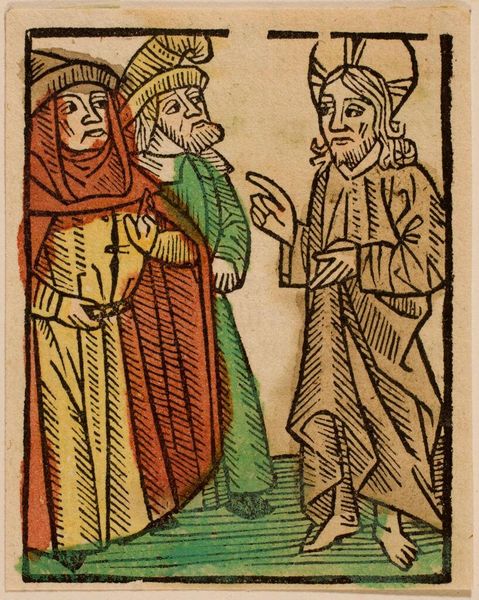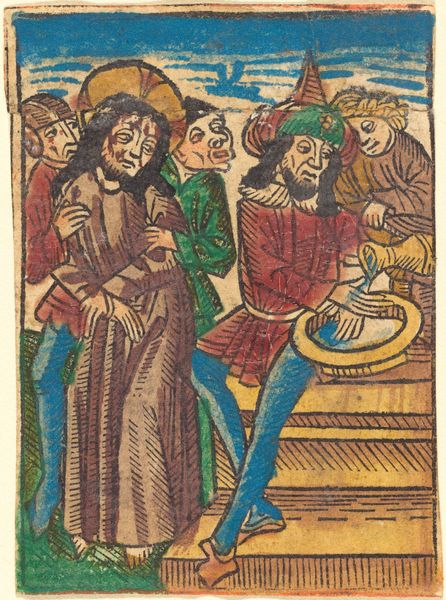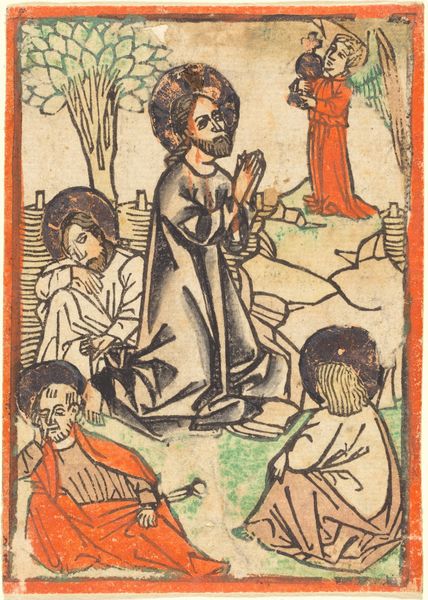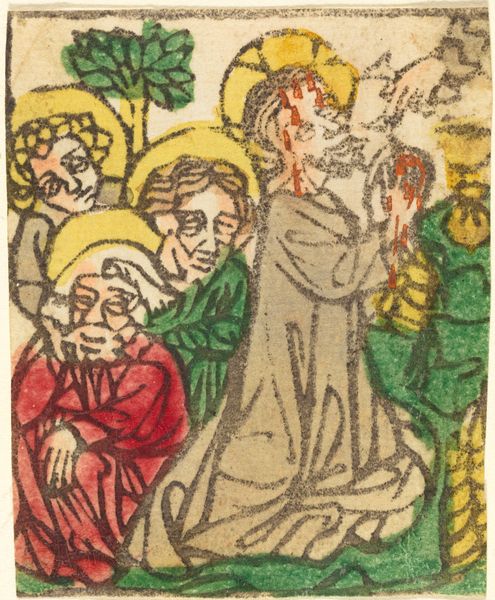
drawing, coloured-pencil, tempera, print, watercolor, ink
#
drawing
#
coloured-pencil
#
medieval
#
ink painting
#
tempera
# print
#
figuration
#
watercolor
#
ink
#
coloured pencil
#
watercolour illustration
#
history-painting
#
international-gothic
#
miniature
Copyright: National Gallery of Art: CC0 1.0
Curator: Let’s discuss this small, vibrant piece titled "Christ before Herod," thought to be made sometime between 1425 and 1450 by an anonymous artist, crafted with what appears to be tempera, ink, and colored pencil. Editor: My initial reaction is one of quiet drama. The figures, though somewhat stylized, possess an intense expressiveness, especially Herod with his raised hand. And the textures... I'm curious about the handmade paper. Curator: Indeed, understanding its place in history reveals much. Consider this likely existed in a larger manuscript. The International Gothic style, emphasizing elegance, flattened space, and narrative clarity, speaks to the period’s hierarchical worldview and didactic purpose in religious instruction, but perhaps, through the female figures, even to feminine forms of devotion. Editor: Exactly. Looking closer, I'm drawn to the process – the application of the colors seems intentional to direct attention and underscore Herod's authoritative stature and, frankly, the obvious materials. Curator: It raises interesting questions. Is the medium choice simply practical or is there a symbolic meaning embedded within it? Were certain pigments more accessible, linking it to a specific class of artists or patrons? Also the portrayal of Herod raises considerations about power, representation, and anti-semitism. Editor: It feels important to reflect on the labour. Making colored inks from scratch, preparing the drawing surface, the time-consuming nature of medieval craft—it imbues the work with an almost devotional quality. Considering access, do the choices made for "Christ Before Herod" underscore that some depictions were intentionally created with simpler materials to become easily available and approachable? Curator: It seems like you're pointing out how artistic choice affects interpretation by various contemporary audiences? It compels us to interrogate what seems deceptively simple. What can we extract from our material and cultural findings when encountering art from this period and place? Editor: It does prompt crucial interrogation that asks about where an artwork situates its audience within religious historical frameworks and their means of production. It's fascinating how a small, seemingly straightforward image invites so much layered contemplation. Curator: Absolutely. This journey through history and materiality underscores that art doesn't exist in a vacuum. Editor: Right. Understanding production expands meaning and access—that’s the lasting significance of pieces such as this one.
Comments
No comments
Be the first to comment and join the conversation on the ultimate creative platform.
